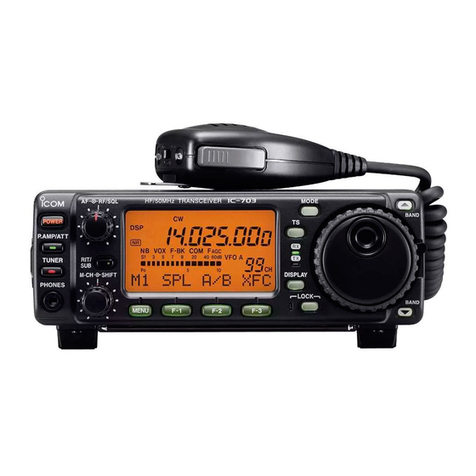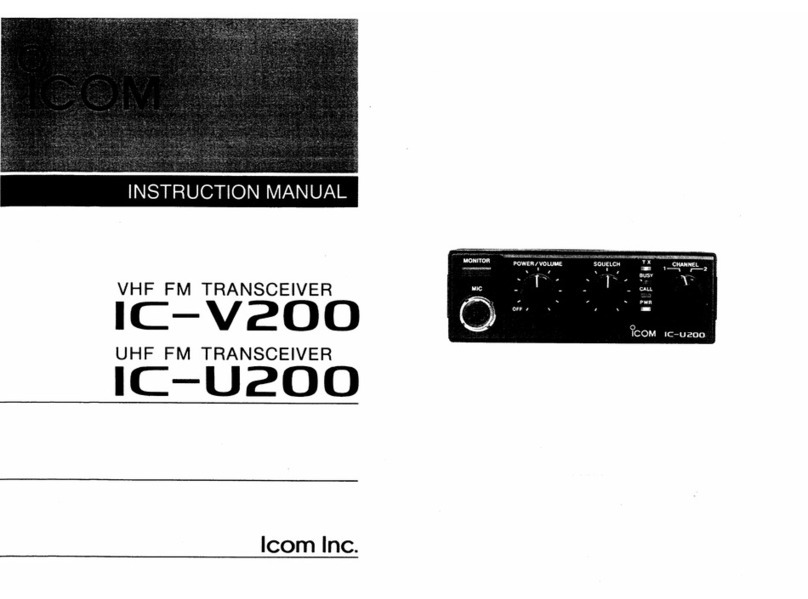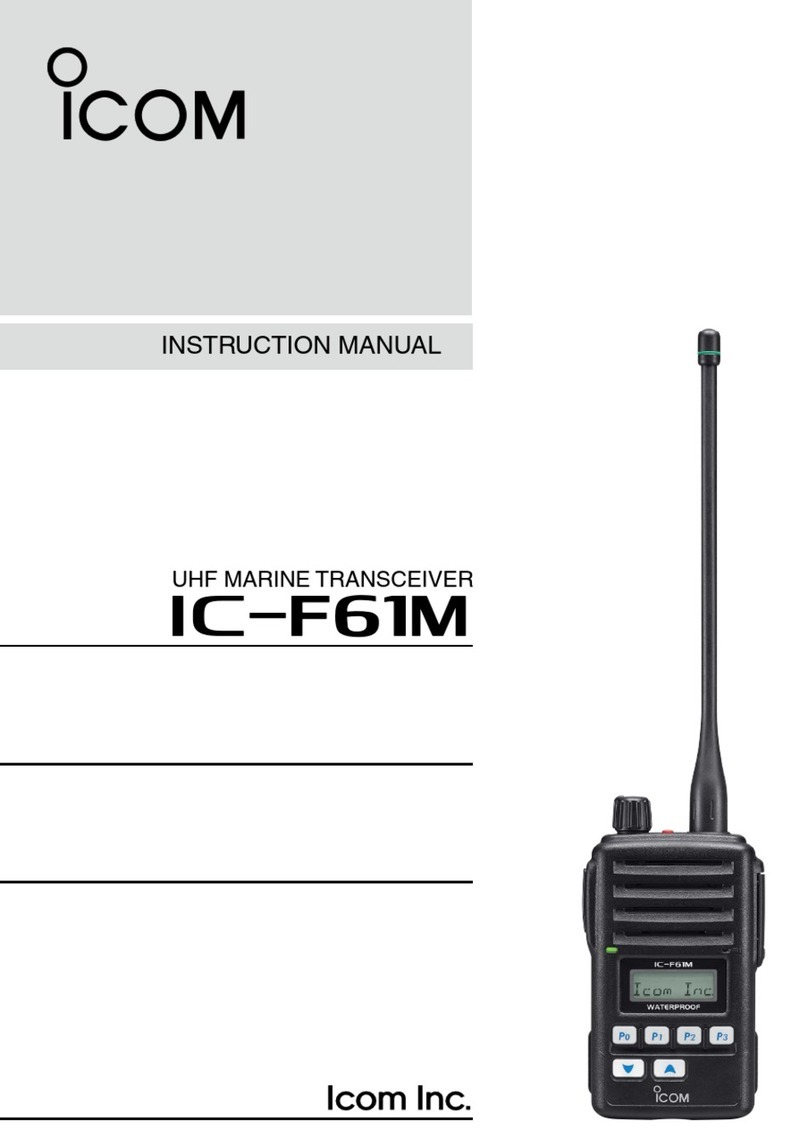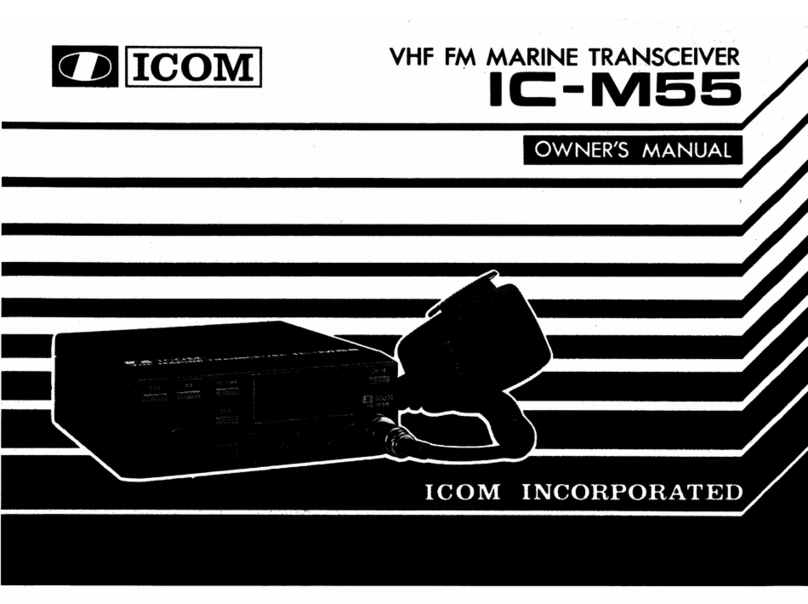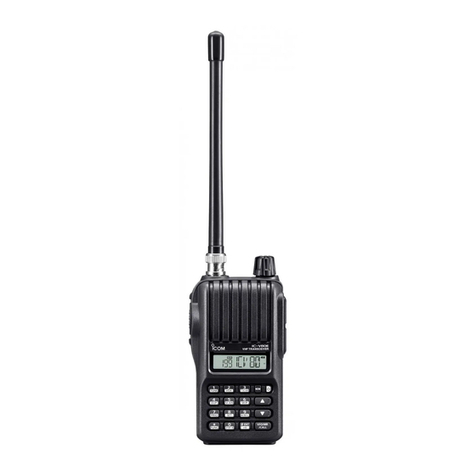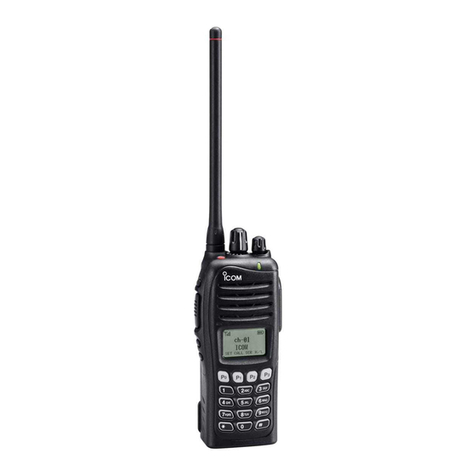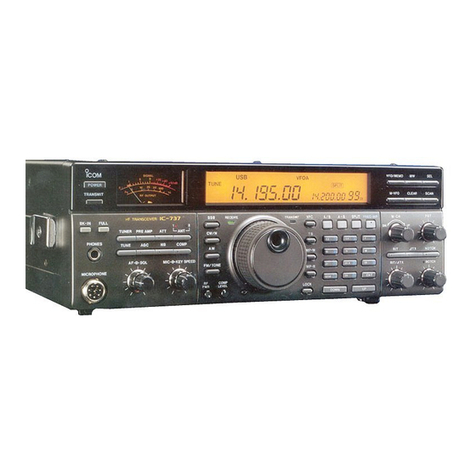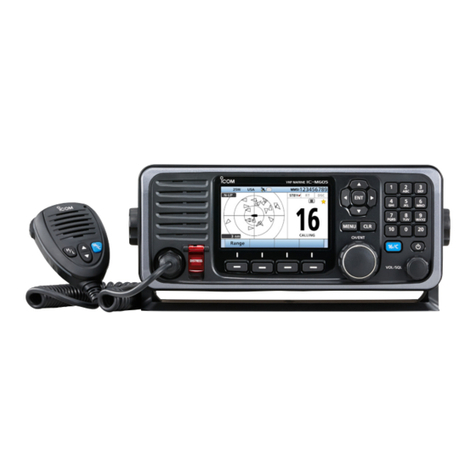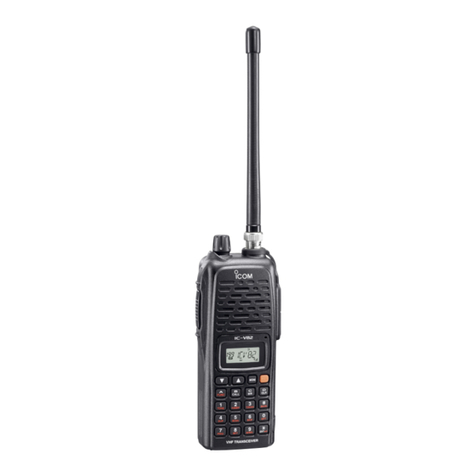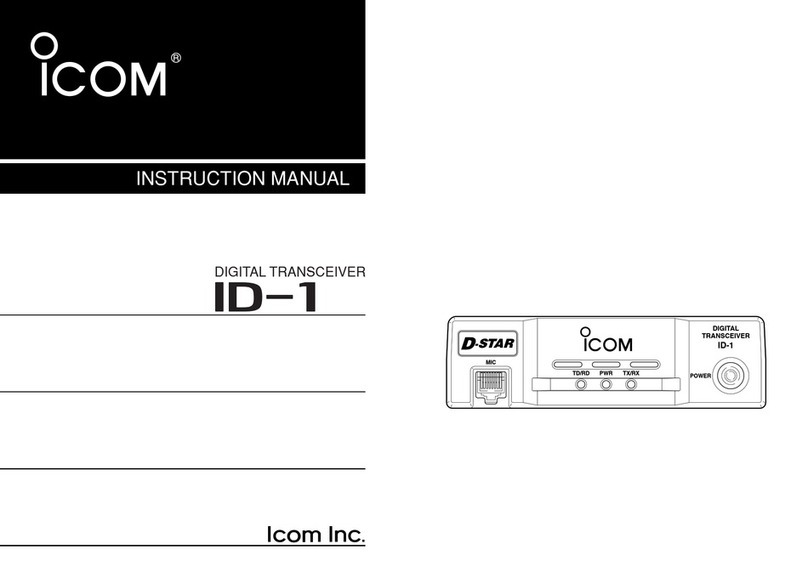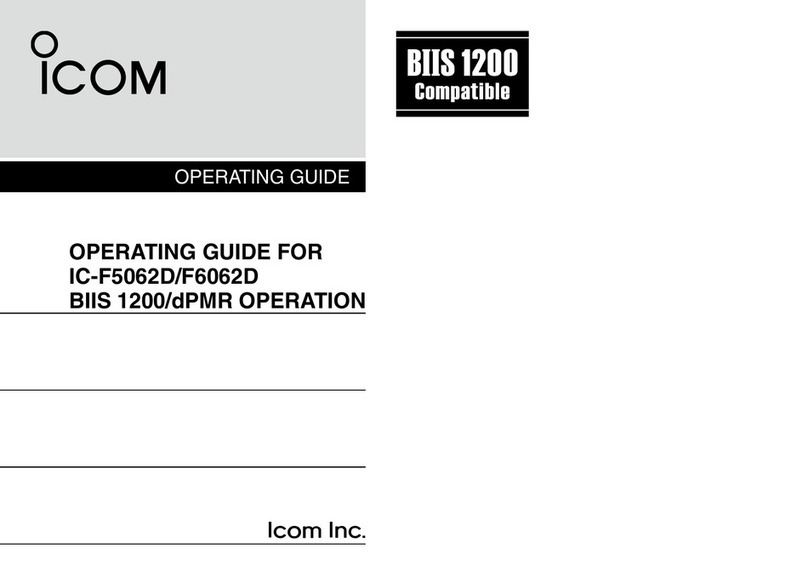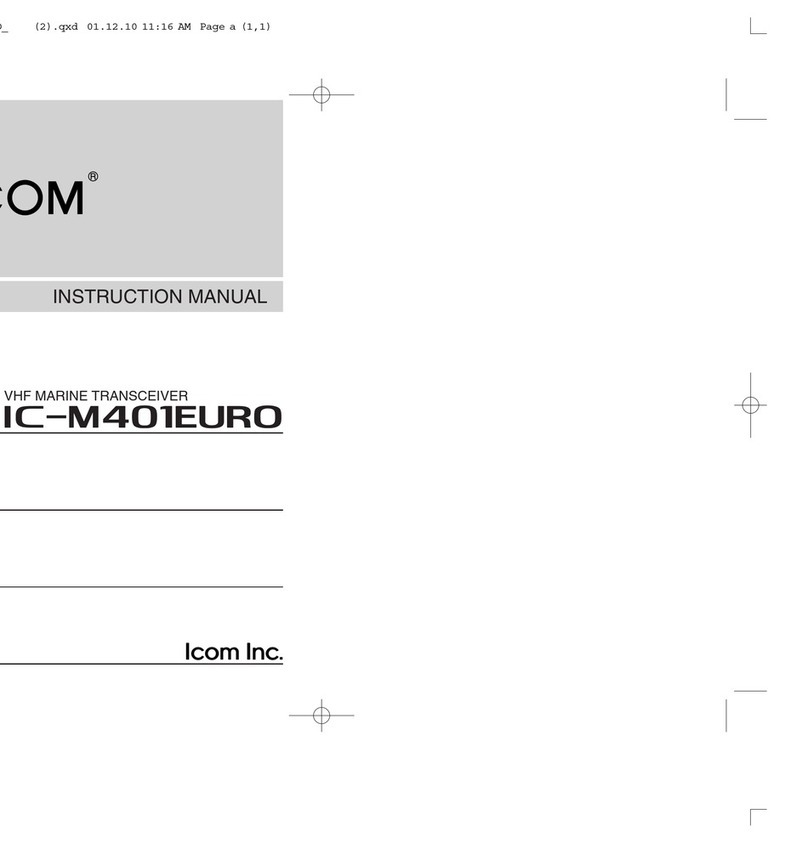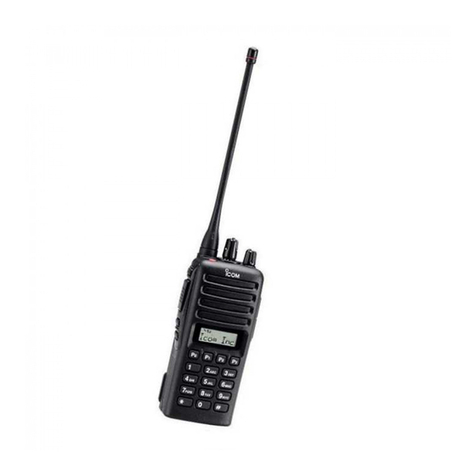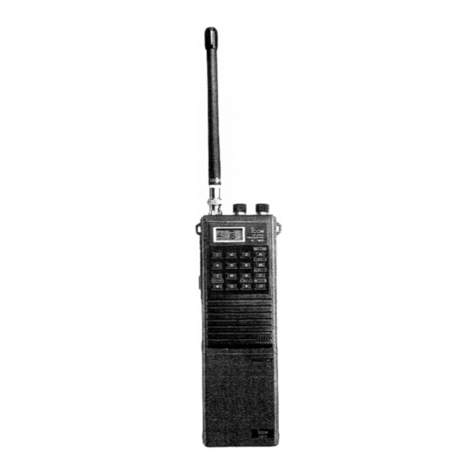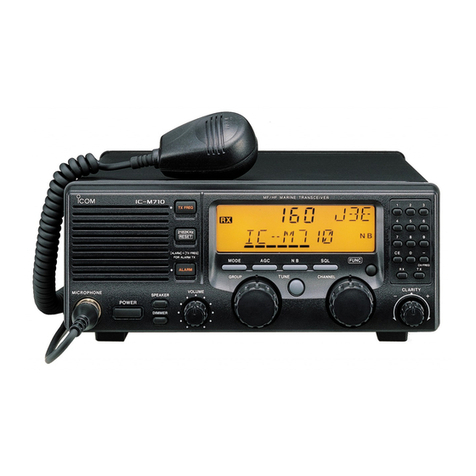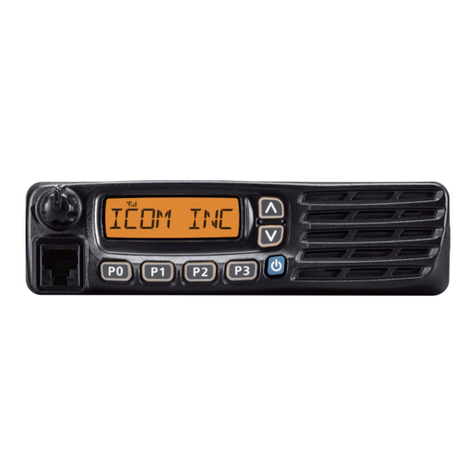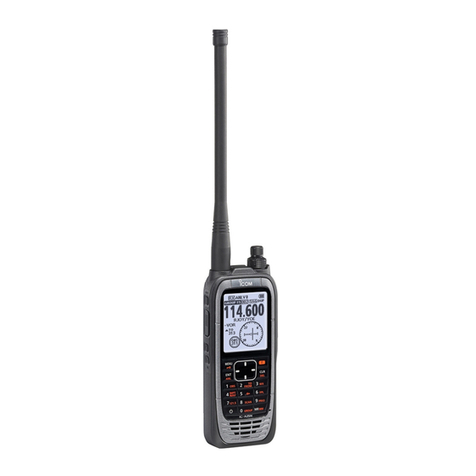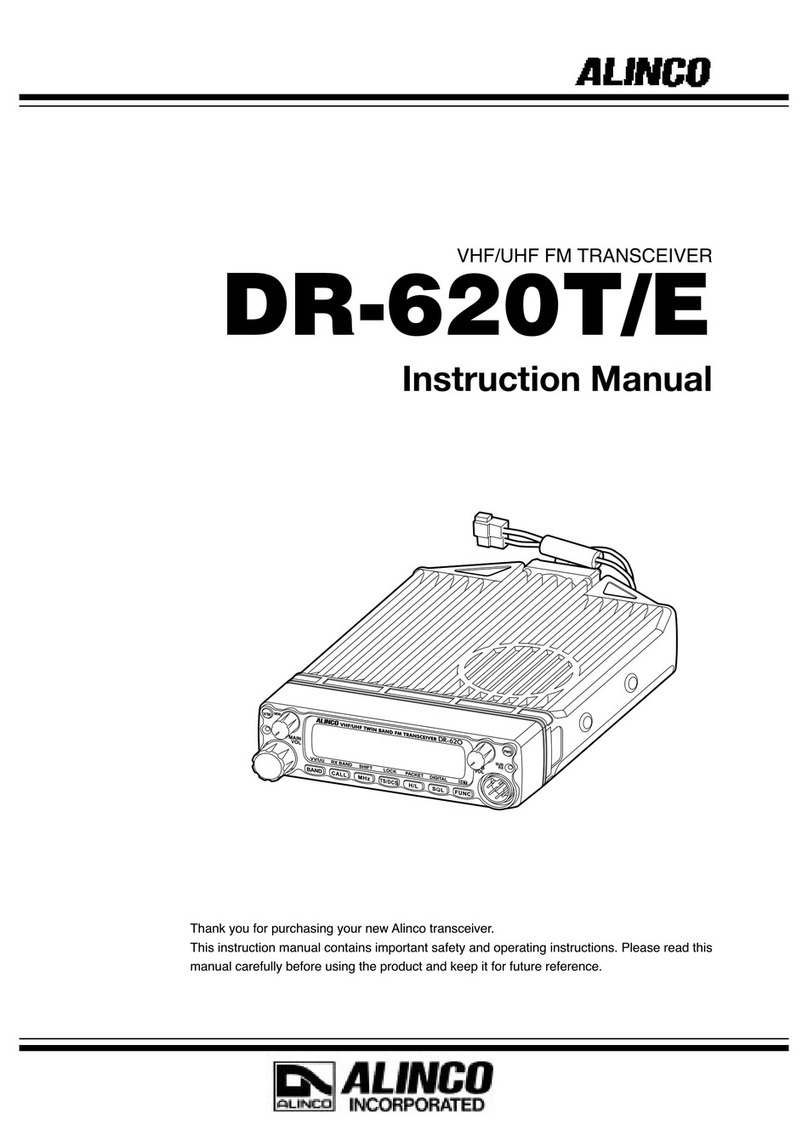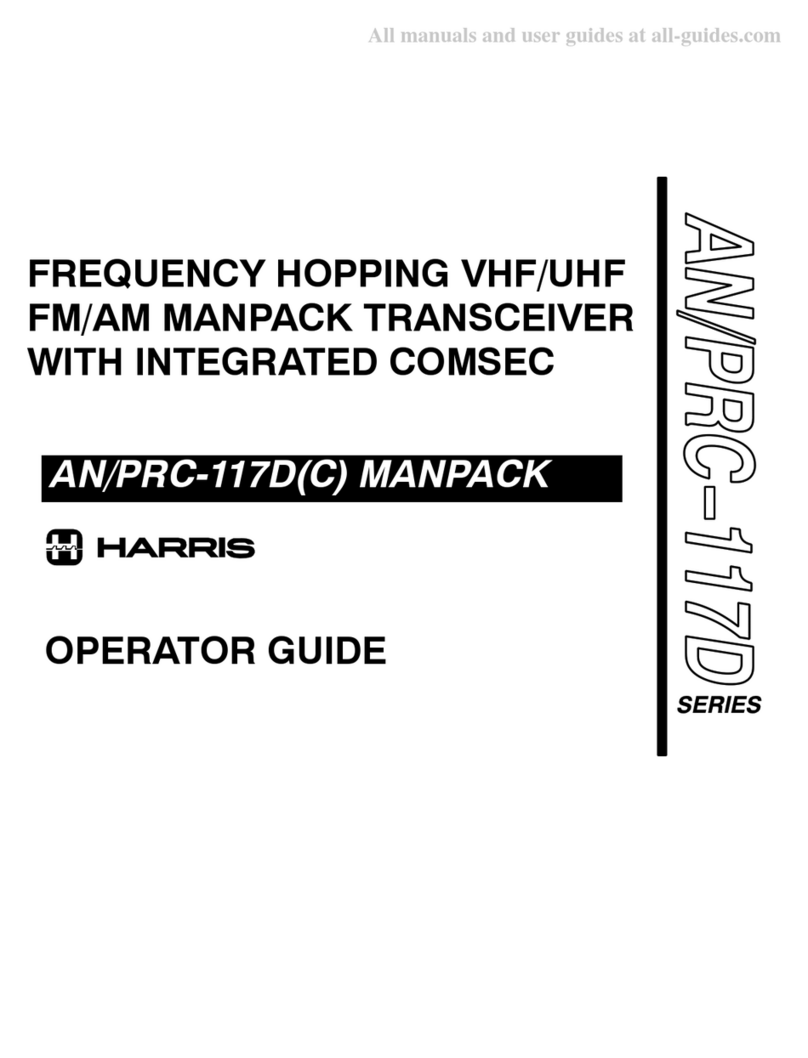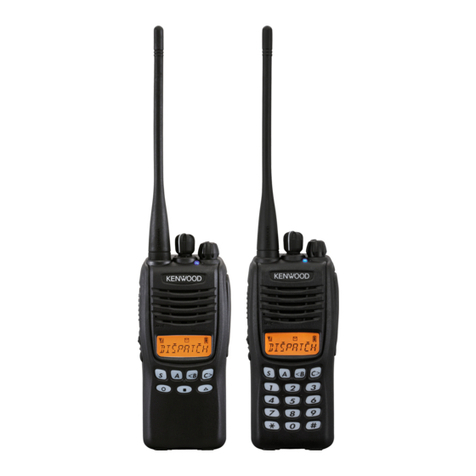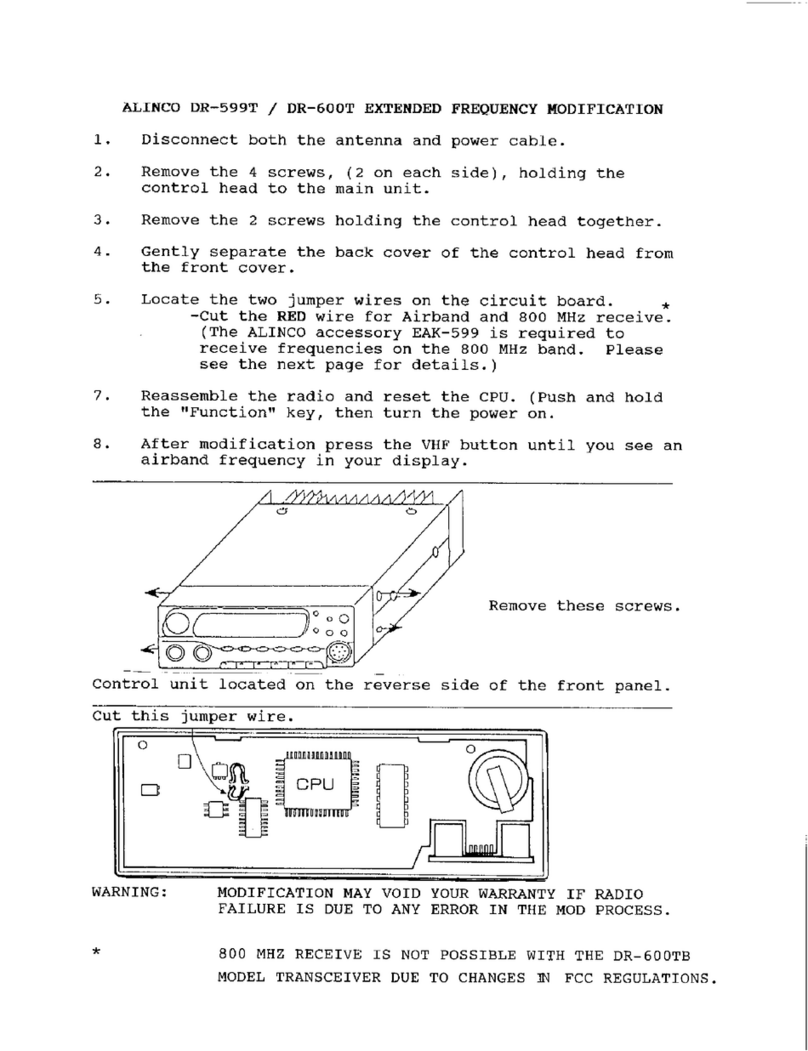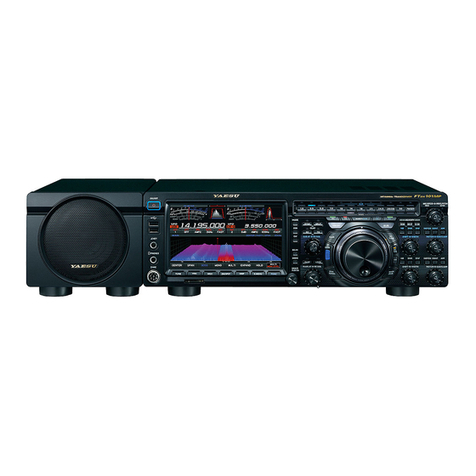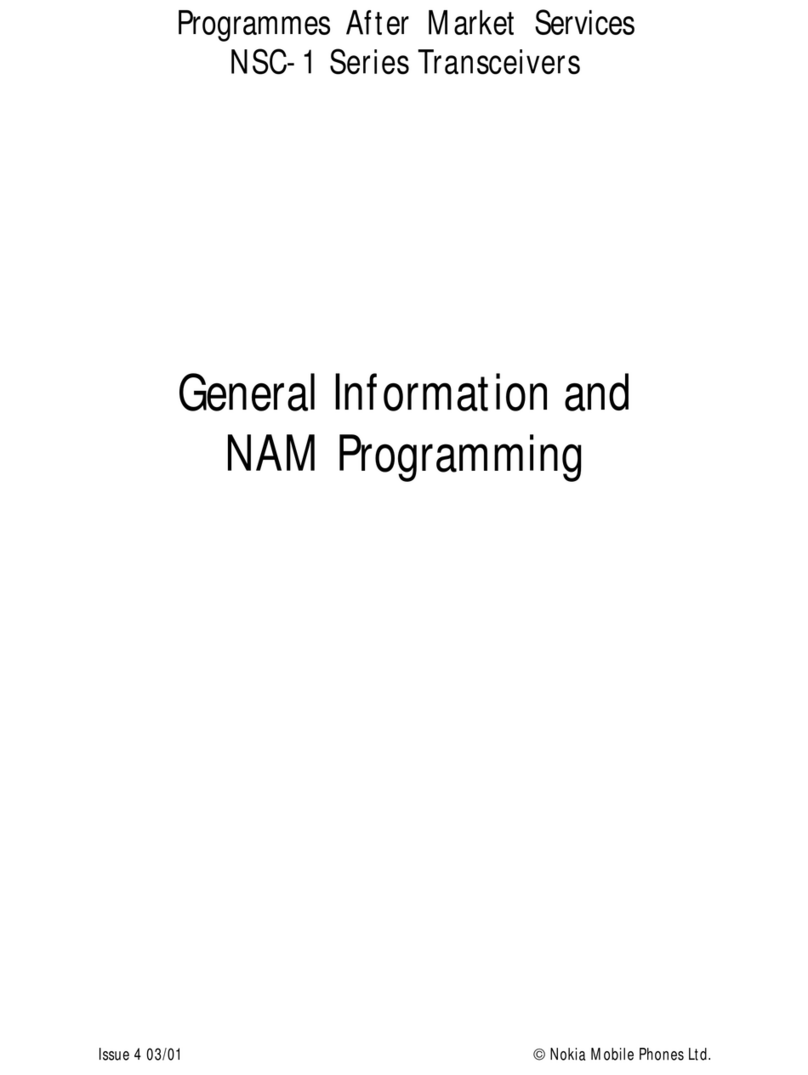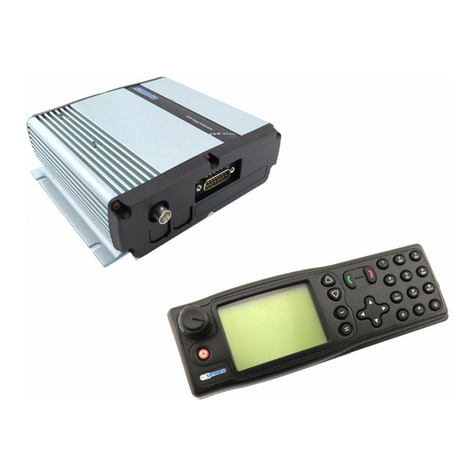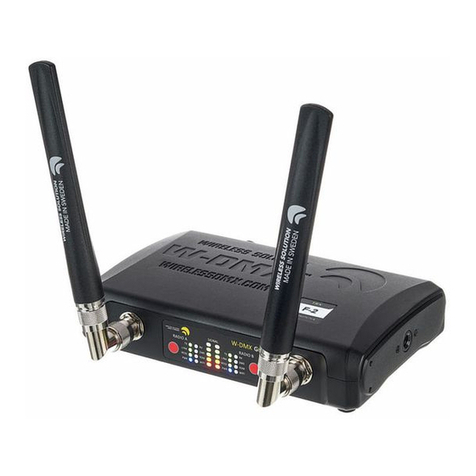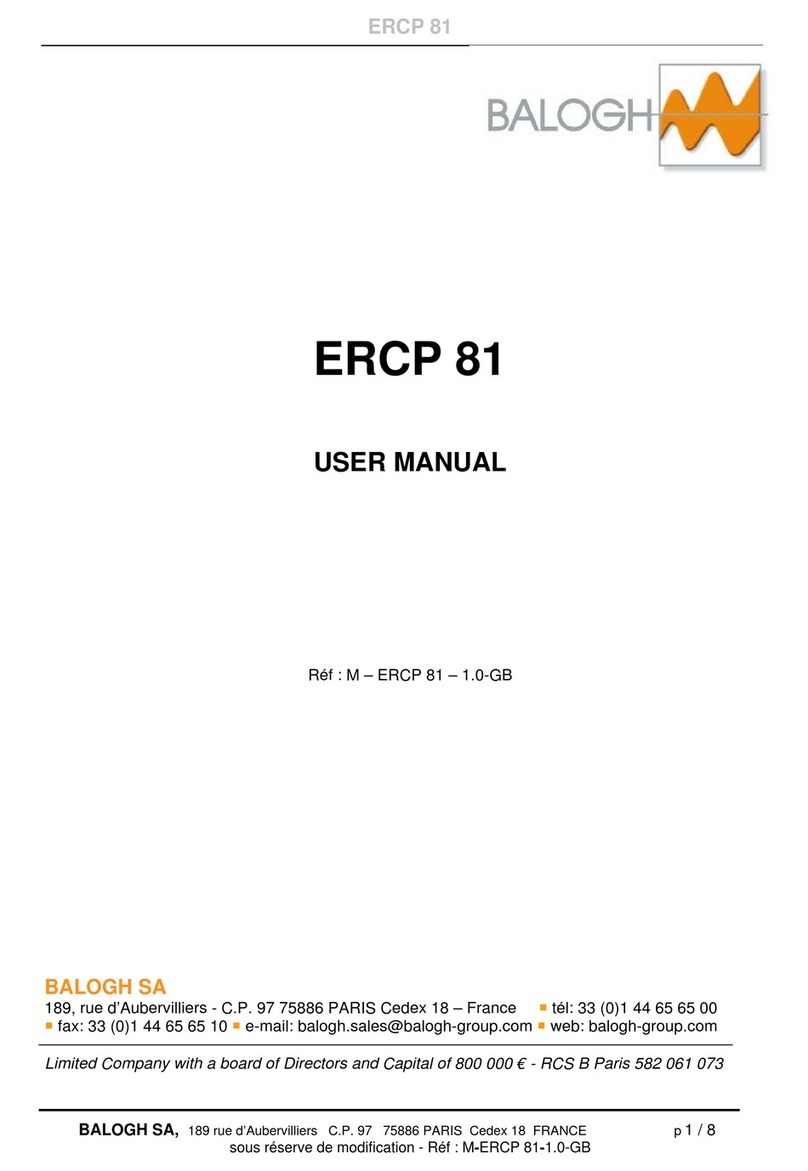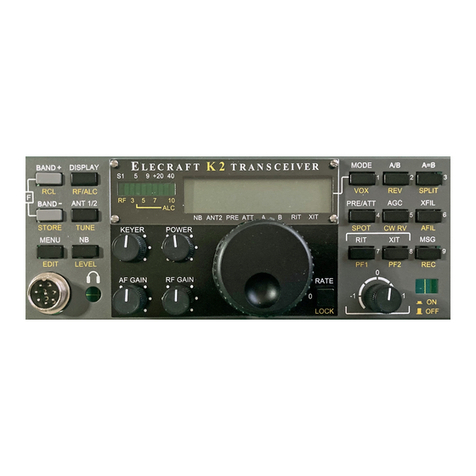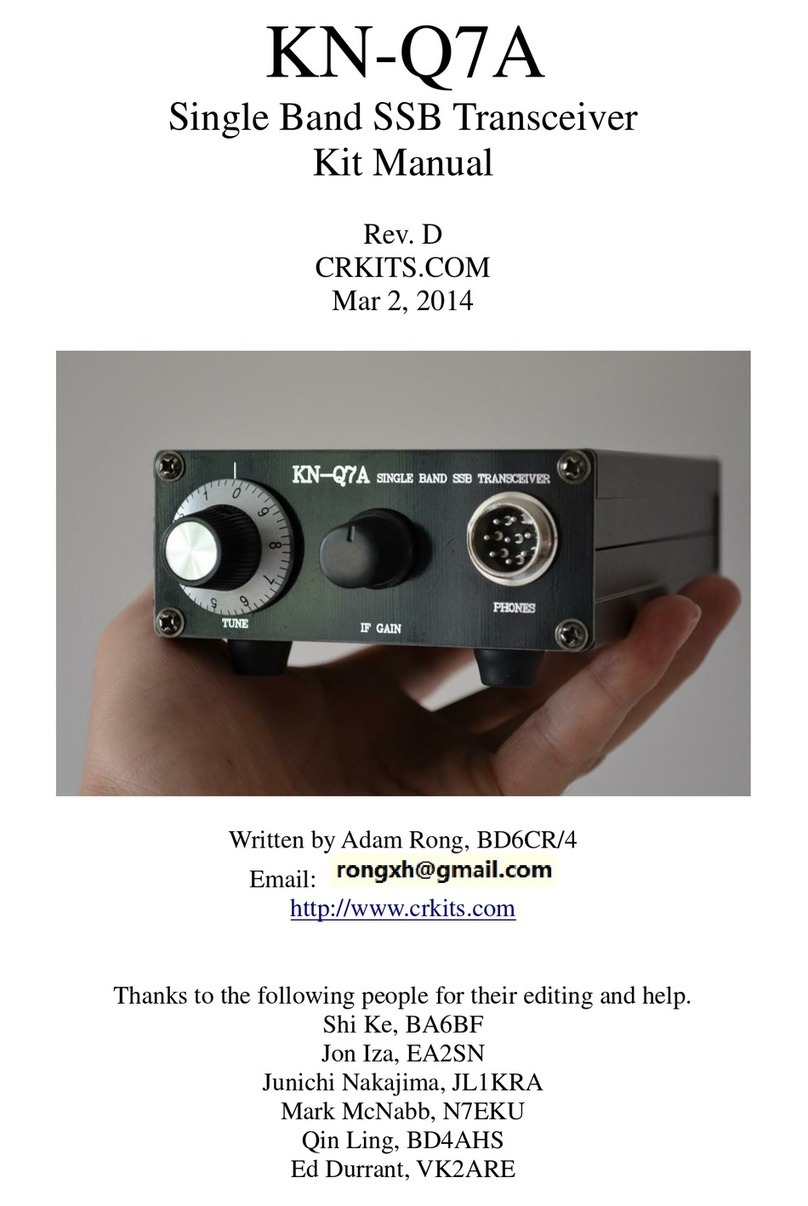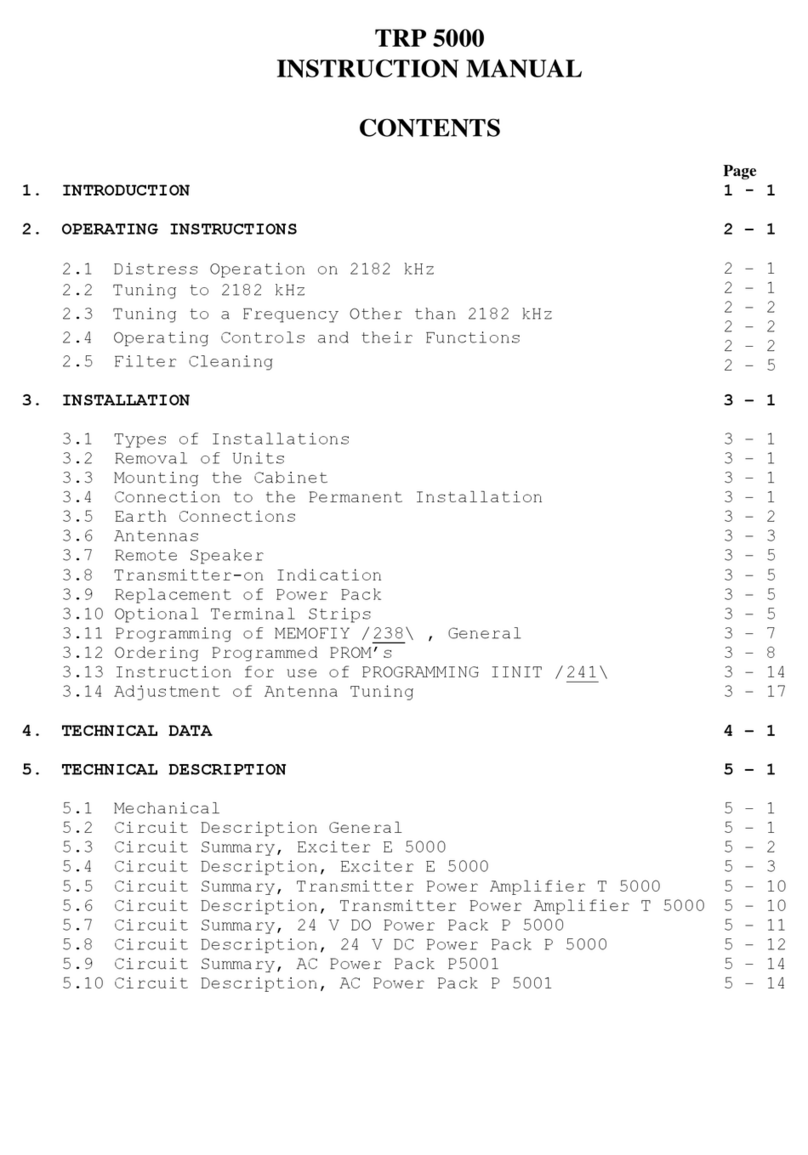Icom IC-A22 User manual

INSTRUCTION
MANUAL
VHF
AIR
BAND
TRANSCEIVER
IC-A22
IC—A22E
This
device
complies
with Part
15
of
the
FCC
Rules.
Operation
is
subject
to
the
condition
that
this
device
does
not
cause
harmful
interference.
Icom
Inc.

IMPORTANT
READ
ALL
INSTRUCTIONS
carefully
and
com-
pletely
before
using
the
transceiver.
SAVE
THIS
INSTRUCTION
MANUAL
-
This
instruction
manual
contains
important
safety
and
operating
instructions
for
the
IC-A22
and
IC-A22E.
EXPLICIT
DEFINITIONS
Equipment
damage
may
occur.
If
disregarded,
inconvenience
only.
No
risk
of
personal
injury,
fire
or
electric
shock.
CAUTIONS
Piet
Lh
ed
12
V
ONLY!
NEVER
connect
the
transceiver
to
a
24
V
socket
or
to
an
AC
outlet.
More
than
15
V
DC
will
damage
the
transceiver.
NEVER
connect
the
transceiver
to
a
power
source
using
reverse
polarity,
This
connection
will
ruin
the
transceiver.
NEVER
allow
children
to
touch
the
transceiver.
AVOID
using
or
placing
the
transceiver
in
direct
sunlight
or
in
areas
with
temperatures
below
—10°C
(+14°F)
or
above
+50°C
(+122°F).
BE
CAREFUL!
When
transmitting
for
a
long
time,
the
rear
panel
will
become
hot.
BE
CAREFUL!
The
use
of
non-Icom
battery
packs
and
chargers
may
impair
transceiver
performance
and
inval-
idate
the
warranty.
UNPLUG
the
external
DC
plug
im-
mediately
when
“OVER
V"
is
displayed
as
shown
at
right,
indicating
more
than
approx.
18
V
DC
is
connected.
WER
y

TABLE
OF
CONTENTS
IMPORTANT
--
EXPLICIT
DEFINITIONS
CAUTIONS
=~
TABLE
OF
CONTENTS
UNPACKING
-~
1
PANEL
DESCRIPTION
«
1
Front
and
side
panels
Top
panel
@
Keypad
@
Function
display
-
2
PRE-OPERATION
----
@
Battery
pack
charging
@
Battery
pack
precautions
@
External
power
source
connection
-
@
Alkaline
battery
installation
@
Accessory
attachment
--
3
BASIC
OPERATION
-
@
Accessing
the
121.5
MHz
emergency
frequency
Setting
a
frequency
ck
function
=~
electing
a
weather
channel
12
Receiving
13
Transmitting
13
@
Side
tone
function
-
4
MEMORY
OPERATION
----
'§
Memory
channel
selection
~
“14
Transferring
memory
contents
+-::
14
Programming
a
memory
channel
---~
15
™
Programming
a
comment
15
™
Clearing
memory
contents
-
16
5
SCAN
OPERATION
@
Scan
types
---
COM
band
scan
Memory
scan
'@
Weather
channel
scan
@
Lockout
channels
---
6
VOR
NAVIGATION
-
VOR
indicators
@
VOR
functions
-
1
Flying
to
a
VOR
station
Entering
a
desired
course
-
UNPACKING
Included
accessories:
@
Antenna
(FA-BO1AR)
@
Belt
clip
and
screws
«
@
Headset
adapter
cable
(OPC-499)*
@
Wall
charger*
‘*
Ni-Cd
battery
pack*
(CM-166)
(attached
to
the
transceiver)
*
Carrying
case
(LC-122)*
-
*
Charger
adapter
cable
(OPC-507)*
*
Not
included
with
some
versions.
ENGLISH

ms
PANEL
DESCRIPTION
i
Front
and
side
panels
ANL
SWITCH
[ANL]
(p.
13)
Activates
the
automatic
noise
limiter
func-
tion,
*
The
function
reduces
pulse
noise
such
as
ignition
noise.
PTT
SWITCH
[PTT]
(p.
13)
Push
and
hold
to
transmit;
release
to
re-
ceive.
LIGHT
SWITCH
[LIGHT]
(p.
13)
Turns
the
display
and
keypad
lighting
ON
and
OFF.
BATTERY
PACK
RELEASE
BUTTON
Opens
the
latch
for
battery
pack
removal
when
pushed
upwards.
(p.
9)
SPEAKER
AND
MICROPHONE
E
=
power
source
simultaneously
charges
the
FUNCTION
DISPLAY
(p.
5)
EXTERNAL
DC
POWER
JACK
[DC
12V]
(p.
9)
Allows
operation
with
a
12
V
DC
power
source
using
the
optional
cables,
CP-17L
or
OPC-515L.
NOTE:
Operation
with
an
external
DC
battery
pack.
This
may
cause
battery
overcharging
and
shorten
the
life
of
the
battery
pack.
CAUTION:
when
the
following
indi-
cation
appears,
unplug
the
connector
from
this
jack.
More
than
approx.
18
V
DC
has
been
connected,
so
the
transceiver
may
need
checking
at
a
service
center.

PANEL
DESCRIPTION
1
Hi
Top
panel
EXTERNAL
SPEAKER
AND
MICROPHONE
JACKS
[SP}/[MIC]
Connect
a
headset
of
the
David
Clark
Co.
via
the
OPC-499,
if
desired.
The
transmit
voice
can
be
monitored
from
the
headset.
The
internal
speaker
will
not
function
when
connected.
Note
that
previous
headset
adapters,
the
HS-61
and
HS-20SB,
cannot
be
used.
ANTENNA
CONNECTOR
(p.
10)
Connects
the
supplied
antenna.
VOLUME
CONTROL
[VOL]
(p.
13)
Turns
the
power
ON
and
OFF,
and
adjusts
the
audio
level.
TUNING
DIAL
[DIAL]
-
Sets
an
operating
frequency,
memory
channel,
weather
channel*
or
duplex
frequency.*
=
Sets
the
1
MHz
digit
after
pushing
(F]
in
frequency
mode.
-
Functions
as
an
omni
bearing
selector
(changes
course
indicator)
in
CDI
mode.
SQUELCH
CONTROL
[SQL]
(p.
13)
Varies
the
squelch
threshold
point
for
noise
mute.
*
Weather
channel
and
duplex
function:
U.S.A.
version
only.
ENGLISH
sa
|

ol
1
PANEL
DESCRIPTION
i
Keypad
KEYLOCK
BEEP
LOCK
OUT
ON
SCAN
ODO@@®
x
Co)
Cur)
@)
Selects
the
DVOR
display
from
the
CDI
display
in
NAV
band.
(p.
19)
-
Changes
the
course
indicator
characteristics
to
“TO”
flag
in
the
DVOR
display
in
NAV
band.
(p.
19)
-
Corrects
the
deviation
while
using
“TO”
flag.
(p.
23)
-
Changes
the
course
indicator
characteristics
to
“FROM”
flag
in
the
DVOR
display
in
NAV
band.
(p.
19)
-
Corrects
the
deviation
while
using
"FROM"
flag.
(p.
23)
Selects
the
CDI
display
from
the
DVOR
display
in
NAV
band.
(p.
19)
-Sets
the
desired
fre-
quency
or
channel.
(pgs.
11, 12,
14)
-
Selects
the
desired
char-
acter
for
memory
channel
comments
while
program-
ming
a
memory
channel.
(p.
15)
-
Inputs
the
degrees
of
the
desired
course
in
CDI
mode.
(p.
21)
Sets
the
duplex
frequency*
in
NAV
band.
Turns
the
duplex
function*
ON
and
OFF
in
NAV
band.
(p.
25)
Turns
the
lock
function
ON
and
OFF.
Turns
the
beep
tone
ON
and
OFF.
(p.
13)
Sets
the
displayed
memory
or
weather*
channel
as
a
lockout
channel.
(p.
18)
Selects
the
121.5
MHz
emergency
frequency.
(p.
11)

-
Clears
the
input
digit
before
entry.
(p.
11)
-
Exits
the
memory
channel,
weather
channel*
or
the
emergency
frequency.
(pgs.
11, 12,
14)
-
Stops
scanning.
(p.
17)
-
Clears
[F]
key
input.
-Changes
the
frequency
or
memory
channel
when
pushed.
(pgs.
11,
14)
-
Changes
the
frequency
or
memory
channel
contin-
uously
when
pushed
and
held,
(pgs.
11,
14)
-
Changes
the
scan
direction,
(p.
17)
Activates
the
secondary
functions
of
keys
and
the
tuning
dial.
The
function
is
automatically
cancelled
after
3
sec.
-
Selects
memory
mode.
(p.
14)
-
Changes
between
the
memory
channel
comments
and
frequency
display.
(p.
14)
Enters
numeral
input.
Enters
consecutive
zero
digits.
(p.
11)
PANEL
DESCRIPTION
1
Clears
a
memory
channel's
contents
when
pushed
and
held.
(p.
16)
Starts
the
full
scan,
memory
scan
or
weather
channel*
scan.
(p.
17)
-
Programs
a
memory
channel
in
frequency
mode.
(p.
15)
-
Transfers
a
memory
channel's
contents
into
the
fre-
quency
mode
in
memory
mode.
(p.
14)
Selects
a
weather
channel.*
(p.
12)
*
Weather
channel
and
duplex
function:
U.S.A.
version
only.
ENGLISH
|

ol
1
PANEL
DESCRIPTION
i
Function
display
TRANSMIT
INDICATOR
(p.
13)
Appears
while
transmitting.
RECEIVE
INDICATOR
(p.
13)
Appears
while
receiving
or
when
the
squelch
opens.
LOCK
INDICATOR
(p.
12)
Appears
while
the
lock
function
is
in
use.
FUNCTION
INDICATOR
Appears
when
the
[F]
switch
is
pushed.
When
no
switch
is
pushed
for
3
sec.,
the
indicator
disappears.
FREQUENCY
READOUT
Shows
the
operating
frequency
or
comments
of
a
memory
channel.
*
The
decimal
point
flashes
while
scann-
ing.
DUPLEX
INDICATOR*
(p.
25)
-“DUP"
appears
when
the
duplex
function
is
activated
in
NAV
band.
-“DUP-W"
blinks
while
setting
the
duplex
frequency.
ANL
INDICATOR
(p.
13)
Appears
while
the
ANL
(Automatic
Noise
Limiter)
function
is in
ust
LOCKOUT
INDICATOR
(p.
18)
Appears
when
the
selected
memory
channel
is
set
as
a
lockout
channel.
MEMORY
CHANNEL
READOUT
(p.
14)
Shows
the
selected
memory
chan-
nel
number.
*
Only
“M"
appears
when
the
121.5
MHz
emergency
frequency
is
selected.
*
Duplex
function:
U.S.A.
version
only.

ee
COURSE
INDICATOR
(pgs.
21,
23)
-
Indicates
where
your
aircraft
is
located
on
a
VOR
radial
in
DVOR
mode.
Indicates
where
your
desired
course
is
located
on
a
VOR
radial
in
CDI
mode.
——_—_
TO-FROM
FLAG
INDICATORS
(pgs.
21,
23)
Indicate
whether
the
VOR
navi-
gation
information
is
based
on
a
course
leading
to
the
VOR
station
or
leading
away
from
the
VOR
station.
|
Feerncaeis
eet
Bh
iene
beso
ail
PANEL
DESCRIPTION
1
LOW
BATTERY
INDICATOR
(p.
7)
Appears
when
the
battery
voltage
drops
to
10
V
DC
or
below.
The
attached
battery
pack
requires
re-
charging
or
the
alkaline
batteries
need
replacing.
OVERFLOW
INDICATOR
(pgs.
21,
23)
Appears
when
the
deviation
be-
tween
the
desired
course
and
flying
course
is
over
10
degrees.
COURSE
DEVIATION
NEEDLES
(pgs.
21,
23)
Indicates
the
deviation
between
the
desired
course
and
your
actual
fly-
ing
course
every
2
degrees.
ENGLISH
oT

ms
2
~I
PRE-OPERATION
li
Battery
pack
charging
Charge
the
battery
pack
before
first
operating
the
trans-
ceiver
and
when
the
low
battery
indicator
appears.
li
Battery
pack
precautions
NEVER
throw
a
battery
pack
into
a
fire.
NEVER
expose
the
battery
pack
to
water.
NEVER
short
the
metal
terminals
of
a
battery
pack.
DO
NOT
attempt
to
charge
a
fully
charged
battery
pack.
DO
NOT
discharge
a
battery
pack
completely.
AVOID
overcharging.
Disconnect
the
wall
charger
or
power
cable
within
48
hrs.
Charging
may
not
occur
in
extreme
cold
(under
0°C;
+
32°F
)
or
extreme
heat
(over
+
40°C;
+
104°F
).
i
About
the
battery
pack
©}
Operating
period
Operating
period
of
the
CM-166
(12
V,
600
mA)
is
approx.
5
hours.
CONDITION:
5%
Tx
/
5%
Rx
/
90%
Standby
(squelched).
The
operating
period
is
an
estimate
and
varies
depending
on
temperature,
etc.
©
Battery
memory
effect
Full
charge
capacity
may
become
lower
when
repeatedly
recharging
after
only
partial
discharging.
If
this
occurs,
discharge
almost
completely
through
normal
use
before
recharging.
}
Battery
pack
life
When
the
operating
period
becomes
extremely
short
even
after
charging
the
battery
pack
fully,
a
new
battery
pack
is
needed.
Recycling
information
(U.S.A.
only)
The
product
that
you
have
purchased
contains
a
&
rechargeable
battery.
The
battery
is
recyclable.
At
the
end
of
its
useful
life,
under
various
state
and
local
laws,
it
may
be
illegal
to
dispose
of
this
battery
into
the
municipal
waste
stream.
Call
1-800-8-BATTERY
for
battery
recycling
options
in
your
area
or
contact
your
dealer.

i
Charging
connections
©
Regular
charging
without
transceiver
Connect
the
wall
charger
to
the
charger
jack
on
the
side
panel
of
the
CM-166.
Some
versions
require
an
adapter
cable
for
connection.
To
AC
outlet
Wall
charger
Approx.
charging
period:
15
hrs.
N
G,
While
connecting
the
wall
charger,
DO
NOT
connect
any
GY
G
cables
to
the
transceiver's
[DC
12V]
jack.
WW
PRE-OPERATION
2
©
Rapid
charging
with
the
optional
BC-79
@
Insert
the
optional
AD-50
DESKTOP
CHARGER
ADAPTER
into
the
charging
slot
of
the
BC-79
DESKTOP
CHARGER,
@®
Firmly
insert
a
battery
pack
into
the
AD-50.
ENGLISH
Be
sure
to
turn
the
power
OFF.
CM-166
only
or
transceiver
with
CM-168
Connect
one
of
the
4
following:
-
AC
adapter
supplied
Optional
with
the
BC-79
AD-50
-
Optional
CP-13/L.
-
Optional
OPC-288/L
i
Approx.
charging
period:
1.5
hrs.
bal
|

ol
2
PRE-OPERATION
i
External
power
source
connection
An
optional
CP-17L
CIGARETTE
LIGHTER
CABLE
is
available
to
operate
the
IC-A22
with
a
12
V
cigarette
lighter
socket.
The
attached
Ni-Cd
battery
pack
is
charged
in
approx.
15
hrs.
simultaneously.
While
connecting
an
external
power
source,
DO
NOT
connect
the
wall
charger
to
the
CM-166.
The
OPC-515L
DC
POWER
CABLE
with
a
12
V
DC
power
supply
can
be
used
instead
of
the
CP-17L.
Wf
Alkaline
battery
installation
An
optional
CM-167
BATTERY
CASE
is
available.
Install
ten
alkaline
batteries
as
follows.
@
Push
and
hold
the
battery
release
button
upwards,
then
slide
the
battery
case
to
the
right
with
the
transceiver
facing
you.
(Fig.
1)
@®
Open
the
battery
case.
(Fig.
2)
@
Install
10
alkaline
batteries.
(Fig.
3)
*
Pay
attention
to
the
polarities,

lM
Accessory
attachment
©
Antenna
Connect
the
supplied
flexible
antenna
into
the
antenna
connector
and
rotate
clockwise.
Y
NOTE:
The
supplied
flexible
antenna
is
optimized
for
Z
communication
frequencies.
For
improved
reception
of
Y
VOR
signals,
you
can
connect
it
directly
to
the
aircraft's
Z
NAV
antenna.
CAUTION:
Transmitting
without
the
antenna
may
damage
the
transceiver.
PRE-OPERATION
2
©
Belt
clip
Remove
the
plastic
screws,
then
attach
the
belt
clip
with
the
supplied
metal
screws.
Conveniently
attaches
to
your
belt.
ENGLISH

ms
3
BASIC
OPERATION
lM
Accessing
the
121.5
MHz
emergency
frequency
The
IC-A22
can
quickly
access
the
121.50
MHz
emergency
frequency.
This
function
can
be
activated
even
when
the
keypad
lock
function
is in
use.
(p.
12)
@
Rotate
[VOL]
to
turn
power
ON.
@®
Push
[F]
on
the
keypad.
*°
@
“appears.
@®
Push
[©
121.5]
to
call
the
emer-
gency
frequency.
@
Push
[CLR]
to
exit
from
the
emergency
frequency.
EXAMPLE:
Setting
the
frequency
to
120.000
MHz
using
the
keypad.
i
Setting
a
frequency
©
Using
the
keypad
@
Rotate
[VOL]
to
turn
power
ON,
@
Push
[CLR]
to
select
frequency
mode
when
“M"
or
“WX”
appears
in
the
function
display.
@
Push
5
appropriate
digit
keys
to
input
the
frequency.
*
Enter
[1]
as
the
1st
digit.
*
When
a
digit
is
mistakenly
input,
push
[CLR]
to
clear
the
input,
then
start
again.
«
Push
[ENT]
to
enter
consecutive
zero
digits.
*
Only
[2}, [5],
(7]
or
[0]
can
be
entered
as
the
Sth
and
final
digit.
@
To
change
the
frequency
according
to
the
tuning
step
(25
kHz
step),
push
[A]
or
[W].
Push
and
hold
[A]
or
['W]
to
change
the
frequency
quickly,
Decimal
point
appears.
[ew
4575
|_.
;
EXAMPLE:
Setting
frequency
to
136.425
MHz
using
the
keypad.
Oe
@@
(Phang
as
|
8
ager
||
TET
Decimal
point
appears.
@
—
|
36He25

©
Using
the
tuning
dial
@
Rotate
[VOL]
to
turn
power
ON.
@®
Push
[CLR]
to
select
frequency
mode.
@
Rotate
the
tuning
dial
to
set
the
desired
frequency.
@
To
select
the
1
MHz
tuning
step,
push
[F]
then
rotate
the
tuning
dial.
Rotation
only
After
pushing
[F]
25
kHz
step
1
MHz
step
NOTE:
The
selected
frequency
may
take
up
to
2
sec.
to
be
backed
up
after
they
are
set,
Wait
2
sec.
before
turning
power
OFF,
WW
i
Lock
function
The
lock
function
prevents
accidental
frequency
changes
and
accidental
function
activation.
@
Push
[F]
then
[@KEY
LOCK]
to
*
O
"appears.
turn
the
function
ON,
@®
To
turn
the
function
OFF,
repeat
6895
step
@
above,
©“
w-O
"
disappears.
BASIC
OPERATION
3
li
Selecting
a
weather
channel
(U.S.A.
version
only)
The
U.S.A.
version
has
VHF
marine
weather
channel
receiving
capability
for
flight
planning.
@
Push
[F]
on
the
keypad.
©"
@
“appears.
@
Push
[ENT-WX]
to
select
weather
channel
mode.
*
"WX."
and
previously
selected
channel
number
appears.
@
Rotate
the
tuning
dial
to
set
the
desired
channel.
*
The
[A]
or[¥]
key can
be
used,
*
To
select
weather
channels
1-9
directly,
push
[1]}-{9]
then
[ENT],
or
push
[0]
then
[1}+{9].
*
To
select
weather
channel
10
directly,
push
[1]
then
[0].
@
Push
[CLR]
or
[MR]
to
exit
weather
channel
mode
and
return
to
frequency
or
memory
mode.
ENGLISH

3
BASIC
OPERATION
i
Receiving
@
Rotate
[SQL]
maximum
clockwise.
@
Rotate
[VOL]
to
turn
power
ON
and
adjust
the
audio
level.
@
Rotate
[SQL]
counterclockwise
until
noise
is
muted.
©
“(0
"disappears,
@
Set
the
desired
frequency
using
the
tuning
dial
or
keypad.
(pgs.
11,
12)
Push
[LIGHT]
to
turn
the
display
and
keypad
lighting
ON,
if
desired.
©
Push
[ANL]
to
reduce
pulse
noise
such
caused
by
engine
ignition
systems,
if
necessary.
©
“ANL"
appears.
®©
When
a
signal
is
received
on
the
set
frequency:
-
The
receive
indicator
appears.
-
Squelch
opens
and
audio
is
emitted
from
the
speaker,
When
the
[SQL]
control
is
set
too
“tight”
(extremely
counterclockwise),
squelch
may
not
open
for
weak
signals.
To
receive
weak
signals,
set
the
squelch
to
a
,
“\oose”
(more
clockwise)
position.
WE
©
Beep
tone
on/off
The
beep
tone
which
sounds
each
times
a
switch
is
pushed
can
be
turned
ON
or
OFF,
as
desired,
~
Push
[F]
then
[@
BEEP]
to
turn
the
beep
tone
ON
or
OFF.
li
Transmitting
CAUTION:
Transm
age
the
transceivs
g
without
an
antenna
may
dam-
NOTE:
To
prevent
interference,
listen
on
the
frequency
before
transmitting.
If
the
frequency
is
busy,
wait
until
the
channel
is
clear.
@
Set
the
desired
frequency
in
COM
band
using
the
tuning
dial
or
keypad.
(pgs.
11,
12)
*
COM
band
frequency
range:
118.00-136.975
MHz
@
Push
and
hold
[PTT]
to
transmit.
*
*(7X)"
appears.
@
Speak
into
the
microphone
at
a
normal
voice
level.
«DO
NOT
hold
the
transceiver
too
close
to
your
mouth
or
‘speak
too
loudly.
This
may
distort
the
signal.
@
Release
[PTT]
to
return
to
receive.
li
Side
tone
function
When
using
an
optional
headset
from
the
David
Clark
Co.
via
the
OPC-499,
the
transceiver
outputs
your
transmitted
voice
to
the
headset
for
monitoring.

i
Memory
channel
selection
The
transceiver
has
50
memory
channels
for
storage
of
often-used
frequencies
along
with
6-character
notes.
@
Push
[MR]
to
select
memory
mode.
@
Select
the
desired
memory
channel.
Using
the
tuning
dial:
Rotate
the
tuning
dial
to
select
the
desired
memory
channel.
*
Only
programmed
memory
channels
appear.
Using
the
keypa
Push
2
appropriate
digit
keys
(01-50)
to
select
the
desired
memory
channel.
*
To
select
memory
channels
1-9,
push
(1}{9]
then
[ENT];
or,
push
[0]
then
[1}{9}.
Using
the
A/W
keys:
Push
[A]
or
['W]
to
change
the
memory
channel.
*
Pushing
[A]
or
[W]
changes
the
memory
channel
contin-
uously.
@
When
a
comment
appears,
push
[MR]
to
display
the
programmed
frequency,
if
desired.
@
To
return
to
frequency
mode,
push
[CLR].
Y
Comments
appear
first
when
programmed,
however,
the
transceiver
can
be
programmed
to
show
the
operating
frequency
first
by
your
dealer.
Push
[MR]
to
display
the
7,
comment
in
this
case.
KD.
LOO
Pers
vba
MEMORY
OPERATION
4
El
li
Transferring
memory
contents
This
function
transfers
a
memory
channel's
contents
into
the
frequency
mode.
This
is
useful
when
searching
for
signals
around
a
memory
channel's
frequency.
then
Frequency
mode
@
Push
[MR]
to
select
memory
mode.
*
°M"
appears,
@
Select
the
desired
memory
channel
to
be
transferred
using
the
tuning
dial
or
keypad.
@
Push
[F]
then
[MR-MW].
*“M"
disappears
as
frequency
mode
is
automatically
selected
and
the
memory
contents
are
transferred,

4
MEMORY
OPERATION
i
Programming
a
memory
channel
You
can
program
the
following
data
into
each
memory
channel
separately.
©
Operating
frequency
(pgs.
11,
12)
©
6
digit
comment
(p.
15)
Lockout
and
duplex*
information
(pgs.
18,
25)
@®
Set
the
desired
frequency
in
frequency
mode:
~Push
[CLR]
to
select
frequency
mode;
or,
push
[F]
then
[ENT-WX]
to
select
a
weather
channel."
Set
the
desired
frequency
or
weather
channel*
using
the
tuning
dial
or
keypad.
@
Push
[F]
then
[MR-MW].
©
"M"
blinks.
@
Select
the
memory
channel
(01-50)
to
be
programmed
using
the
tuning
dial
or
keypad.
@
Push
[MR]
to
enter
the
frequency
and
to
write
a
com-
ment;
push
[ENT]
to
program
the
frequency
and
to
skip
writing
a
comment.
Push
[ENT]
to
program
a
weather
channel."
A
comment
cannot
be
programmed
with
a
weather
channel.
Push
[CLR]
to
cancel
programming.
©
Set
a
desired
comment
as
described
at
right.
©
Push
[ENT]
to
program.
*
Weather
channel
and
duplex
function:
U.S.A.
version
only.
i
Programming
a
comment
The
memory
channel
can
display
a
6-character
comment
as
well
as
a
frequency.
@®
Set
the
desired
frequency
in
frequency
mode.
@®
Push
[F]
then
[MR-MW].
@
Select
the
memory
channel
to
be
programmed.
@
Push
[MR]
to
enter
the
frequency.
©
Push
the
appropriate
digit
key
several
times
to
select
the
desired
character
as
listed
below.
@]7.e.R8/@/atuv|@lawxy
(ENT)
|
Program
|
(Co)
|
0,
Space
Hyphen*"
*'
Hyphen
is
selectable
between
the
3rd
and
4th
digits
only.
@©
Push
[ENT]
to
program.
PROGRAMMING
NOTES
«
Pushing
[A]
or
[‘W]
moves
the
cursor.
«To
input
characters
in
the
same
group,
use
[A]
to
move
the
cursor.
To
clear
the
entered
comment,
push
[CLR]
before
pushing
[ENT].
Wi—ow
WWW
{i

MEMORY
OPERATION
4
EXAMPLE:
Programming
125.000
MHz
into
memory
channel
15
with
“AIR-22”
as
a
comment.
ENGLISH
Hi
Clearing
memory
contents
Unwanted
memory
channels
can
be
cleared.
Programming
@
Select
a
memory
channel
to
be
cleared.
over
a
memory
channel
also
clears
the
previously
pro-
@
Push
[F]
then
push
and
hold
[CLR]
for
1
sec.
grammed
contents.
Memory
channel
1
cannot
be
cleared.
e*------
*
appears
momentarily,
then
the
next
selectable
memory
channel
appears.

me
5
SCAN
OPERATION
i
Scan
types
The
U.S.A.
version
has
3
scan
types
to
suit
your
needs.
The
non-U.S.A.
versions
have
2
scan
types.
COM
BAND
SCAN
(p.
17)
108.00
118,00
MHz
=
MHz
Repeatedly
scans
all
fre-
198.975
quencies
over
the
entire
Hz
COM
band.
MEMORY
SCAN
(p.
17)
Repeatedly
scans
memory
channels
except
lockout
channels.
Used
for
checking
often-used
channels
and
bypassing
usually
busy
channels
such
as
control-tower
ehanne!
frequencies.
WEATHER
CHANNEL
SCAN
(p.
18)
Repeatedly
scans
all
weather
channels
except
lockout
channels.
Weather
channels
are
available
for
the
U.S.A.
version
only.
EE
|
HI
COM
band
scan
@
Push
[CLR]
to
select
frequency
mode.
@®
Set
[SQLJ
to
the
point
where
noise
is
just
muted.
@
Push
[F]
then
[A-UP
SCAN]
or
[W-DN
SCAN]
to
start
the
scan.
When
a
signal
is
received,
the
scan
pauses
until
it
disap-
pears.
To
resume
the
scan,
rotate
the
tuning
dial
or
push
the
[A]
or[¥]
key.
*
To
change
the
scanning
direction,
rotate
the
tuning
dial
or
push
the
[A]
or
[W]
key.
@
To
stop
the
scan,
push
[CLR].
Hi
Memory
scan
@
Push
[MR]
to
select
memory
mode.
@®
Set
[SQL]
to
the
point
where
noise
is
just
muted.
@
Push
[F]
then
[A-UP
SCAN]
or
[W-DN SCAN]
to
start
the
scan,
«
When
a
signal
is
received,
the
scan
pauses
until
it
disap-
pears.
To
resume
the
scan,
rotate
the
tuning
dial
or
push
the
[A]
or
[¥]
key.
*
To
change
the
scanning
direction,
rotate
the
tuning
dial
or
push
the
[A]
or['W]
key.
@
To
stop
the
scan,
push
[CLR].
Other manuals for IC-A22
4
This manual suits for next models
1
Table of contents
Languages:
Other Icom Transceiver manuals
